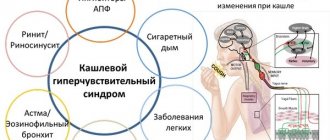Hepatitis in dogs (Rupert's disease, Hepatitis infectiosa canis, viral hepatitis) is a disease caused by an adenovirus or toxic liver damage. It is characterized by fever, catarrh of the mucous membrane of the digestive and respiratory tracts, damage to the central nervous system and inflammation of the liver. The process is accompanied by a necrotic and degenerative phenomenon, a strong blood flow to the organ. The liver cannot cope with its functions, so signs of general intoxication increase in the body.
There are two types of disease:
- Toxic hepatitis. It develops due to the accumulation of toxins and metals in the dog’s liver after taking serious medications.
- Infectious, caused by the entry of an adenovirus into the body. It occurs much more often.
Canine viral hepatitis can occur in acute, fulminant, latent and chronic forms.
The acute form is characterized by pronounced signs of the disease and is curable. Affects the urinary, immune, nervous and digestive systems.
In lightning-fast cases, convulsions are observed, and death in the dog can occur within 2-24 hours.
In the latent form, the animal is a carrier of the virus, but does not exhibit signs characteristic of viral hepatitis. The disease can progress under the influence of unfavorable factors - hypothermia, severe stress, for example, from a change of owner, lack of vitamins.
Chronic infectious hepatitis of dogs is an advanced stage of acute hepatitis and can no longer be treated. At the same time, animals that receive regular medical care aimed at relieving symptoms with a severe form of hepatitis can live a normal life, with the exception of the possibility of reproducing offspring and disturbances in digestive function.
Diagnosing hepatitis is very difficult. The diagnosis is made on the basis of a visual examination, laboratory and histological studies, anamnestic data, medical history, and radiography. In some cases, a biopsy is performed. Some diseases, such as leptospirosis, have similar symptoms to hepatitis.
What you need to know about hepatitis in dogs?
The liver is a unique organ and has a huge number of functions. Starting from metabolism, synthesis of many active substances and to immunological, digestive, etc. This is an independent organ and no matter what the liver is sick with, it all starts with dysfunction.
Canine hepatitis is not dangerous to humans, just as human hepatitis does not pose a threat to our pets. In humans, hepatitis most often develops due to a specific virus or alcohol intake.
Types of pathology
According to the speed of development, hepatitis is divided into chronic and acute.
Acute hepatitis
It develops for two main reasons and is divided into:
- Toxic. Various substances, including drugs, can cause toxic liver damage. Among medications, sulfonamides can harm the liver (Dobermanns and Rottweilers are especially susceptible); anticonvulsants, paracetamol, Rimadyl (Labradors are at risk). You should take itraconazole with caution - it can cause jaundice, which goes away when treatment is stopped.
- Infectious – the disease occurs as a result of a dog being infected with a virus (leptospirosis, infectious hepatitis).
Chronic hepatitis
It happens in all dog breeds, but there is a risk group - Dobermans (especially young females), Bedlington Terriers, Dalmatians, Sky Terriers, Labradors (may suffer from this pathology due to the accumulation of copper in the liver), Cocker Spaniels.
Causes of hepatitis
Possible causes of acute hepatitis:
- Toxic and medicinal (poisoning with poisons, chemicals, drugs).
- Leptospirosis, infectious hepatitis. It should be noted that there are now quite a lot of unfavorable areas for leptospirosis. The difficulty is that immunity after vaccination lasts 6-8 months. And vaccination is carried out once a year. Therefore, unfortunately, even vaccinated dogs can get sick.
- Hypoxia is a lack of oxygen as a result of blood loss or major surgery.
- Cholestasis (stagnation of bile).
- Pancreatitis.
- Septicemia.
Important! Ready-made food, low-quality food, unhealthy diet, eating spoiled food, anthelmintics - all this does not cause toxic hepatitis. Toxic liver damage can only be caused by substances that have established hepatotoxic effects.
It is almost impossible to establish the cause of the development of chronic hepatitis. Most likely, this is a combination of some unfavorable factors that a dog receives during its life.
Why is hepatitis dangerous?
Acute hepatitis develops too rapidly. And, if timely and correct treatment is not provided, death occurs in most cases.
Chronic hepatitis is secretive in its symptoms. Unfortunately, quite often, at the time of contacting a doctor, the process of destruction reaches fibrosis or cirrhosis. It is believed that this is already a severe form of chronic hepatitis, when irreversible changes occur in the liver. This is the final stage of the disease.
How does infection occur?
The virus is released along with the patient’s biological fluids: urine, feces, saliva. Infection occurs through direct contact with an infected dog, his personal belongings or feces.
In the latter case, transmission is often carried out through the owner's shoes. The pathogen retains its pathogenicity outside a living organism for a very long time, so the chance of bringing it into the house is very high.
Symptoms
The main signs of acute hepatitis:
- the first signs of acute inflammation are abdominal pain (with pressure), fever, exhaustion;
- vomit;
- diarrhea (stool may be almost black);
- refusal of food;
- slowness, lethargy;
- jaundice (but not always);
- the dog drinks a lot and urinates often;
- fever (especially with infectious hepatitis).
Convulsions, uncoordinated movements, behavioral disturbances (even coma), red dots on the skin - all this indicates that the process of liver destruction is extremely rapid. In most cases, if these symptoms are present, the animal dies.
Chronic hepatitis in dogs occurs slowly and is initially asymptomatic. At the first stages it does not affect the pet’s quality of life. The disease can last for several months and years. And, unfortunately, owners often turn to a doctor for help at the stage of cirrhosis.
General symptoms of chronic hepatitis:
- periodic vomiting;
- gradual weight loss;
- the dog drinks more often than usual;
- at a later stage, jaundice develops;
- ascites - fluid accumulates in the abdominal cavity, the abdomen becomes bloated and hard.
Diagnostics
First of all, at the appointment, the doctor collects as much information as possible about the pet. Does the dog receive any medications, for how long, or constantly. Vaccination information is important.
For an accurate diagnosis, carry out:
- physical examination (the doctor carefully examines the dog, palpates the liver area, listens to the heart rhythm);
- Ultrasound of the abdominal organs;
- laboratory diagnostics (biochemical analysis and general blood test);
- young dogs are tested for leptospirosis to exclude the viral nature of the disease;
- liver biopsy (last resort).
However, it should be noted that in chronic hepatitis, liver blood counts may often be normal. Therefore, the doctor may prescribe a repeat study after a few months.
How is diagnostics carried out?
The symptoms of the pathology are similar to plague, enteritis and cirrhosis. The following studies are used to identify it:
- urine and blood tests that reveal significant loss of blood cells and increased bilirubin levels;
- bioassays of saliva and vomit that determine the presence of the virus;
- Ultrasound diagnosing the condition of the liver;
- histology confirming the presence of fibrosis or cirrhosis.
After making a diagnosis and finding out the exact cause, a treatment regimen is selected for the four-legged patient. It is based on eliminating intoxication or pathogen and relieving associated symptoms.
Treatment
Treatment of acute hepatitis is primarily symptomatic. If the liver is known to be damaged by a specific toxic substance, an antidote is administered. If the reason is due to taking medication, this drug is canceled or replaced with another.
For infectious hepatitis, an antibiotic is immediately prescribed.
In the chronic form, the diet is adjusted. Prescribe medicinal food or a low-fat diet. To correct the condition, steroid drugs, various hepatoprotectors, and antibiotics are used.
At the stage of cirrhosis, only maintenance therapy is possible.
First aid
The acute form of hepatitis in dogs develops rapidly, so first and subsequent assistance should only be provided by a doctor. Do not physically burden your pet; do not offer food or water before administration.
In chronic cases, nutrition is adjusted. With diarrhea, the dog requires a daily fasting diet, water is not limited.
Basic treatment measures
- Diet therapy. Currently, there is a fairly large selection of industrial medicinal feeds.
- Antibiotic therapy. The drug is prescribed by the doctor depending on the severity of the process.
- Intravenous infusion therapy if the animal loses a lot of fluid (frequent vomiting, diarrhea).
- If a liver biopsy is required, surgery is performed.
- Puncture if fluid accumulates in the abdominal cavity (ascites).
- Prescribing antiemetic drugs.
- In severe cases, a blood plasma transfusion may be needed.
- For chronic hepatitis, glucocorticosteroids are often prescribed. However, here it is necessary to monitor the condition of the sick dog, because... drugs in this group can cause other complications.
Medications
All of the above medications used to treat canine hepatitis can be purchased at a regular human pharmacy. The dosage, frequency and order of application are determined by the doctor , based on a comprehensive assessment of the condition of the sick dog.
Among the antibiotics, the main drugs of choice for doctors for hepatitis are:
- Ampicillin for injection. For infectious hepatitis, it is prescribed intravenously every 8 hours. The administration is continued until the condition stabilizes and then replaced with another antibiotic. A bottle of ampicillin costs 15 rubles.
- Doxycycline in tablet form. The average course of treatment is 14 days. There are 10 capsules in a package, the cost is 25 rubles.
- Metronidazole is prescribed either by injection or in tablet form. Prices for tablets start from 15 rubles. A 100 ml bottle of the drug costs 26 rubles.
Antiemetics
- Cerucal - intramuscular injections are prescribed. Price 220 rubles per pack of 10 ampoules.
Anti-inflammatory
- Prednisolone is best used in the form of injections, this makes it easier to choose the dosage of the drug. It is administered intramuscularly. Cost 162 rubles for 10 ampoules.
Hepatoprotectors
- Ursofalk - given to dogs orally (can be with food). A package (50 tablets) costs 950 rubles.
- Essentiale is more effective when used as an intravenous infusion, but can also be given in capsule form. 5 ampoules of the drug cost 935 rubles. A box of tablets (30 pieces) – 310 rubles.
- Heptral is considered one of the most effective drugs. 5 bottles for injection cost 1,700 rubles.
Traditional medicine
Unfortunately, traditional medicine for hepatitis in dogs is ineffective. It can be used as additional measures to the main treatment. And only after agreeing with the doctor.
- Milk thistle has a hepatoprotective effect (strengthens liver cells) and regulates bile production.
- St. John's wort has a fixative effect and is indicated for diarrhea.
- Dandelion and chamomile have an anti-inflammatory effect, improve the flow of bile, and strengthen the immune system.
Herbs should be given separately. Brew 1 tablespoon in a glass of boiling water. Leave to brew for 30 minutes, filter and drink 10-15 ml 2-3 times a day.
Rules for caring for a sick dog
- The dog must be given complete rest. Physical activity is excluded until complete recovery.
- Strictly monitor your pet's diet. Do not allow complementary foods to be taken from the table . Fresh water should be freely available.
- Be sure to follow all doctor's orders. You can create a medication schedule for each day so you don’t miss anything.
- You may be offered inpatient treatment for your dog at a veterinary clinic. Do not refuse this service if you are not sure that you can cope with the treatment yourself.
Preventive actions
The first and most important way to protect your pet from viral hepatitis is timely vaccination. The first vaccination is given to the dog at the age of two months, and repeated after a year. In the future, your four-legged friend will be vaccinated annually.
To prevent hepatitis, veterinarians recommend using the Nobivak, Kanvak, Avangard or Hexadog vaccines.
In addition to vaccinations, the dog needs to be fed properly and in a balanced manner. Her diet should contain all the necessary minerals and vitamins. We should not forget about the hygiene of the animal and the cleanliness of the room where it is kept.
It should be noted that the causative agent of infectious canine hepatitis is resistant to many disinfectants, including bleach. The virus can be destroyed only with phenol, formaldehyde and high temperatures.
Prevention of hepatitis in dogs
In order not to even know what hepatitis in dogs is, follow these recommendations:
- Dog vaccination is required! Puppies are vaccinated from 2 months. Then vaccination is repeated annually.
- Carefully hide all medications, bottles of chemicals, and boxes of powders! Especially from those interested in everything new puppies.
- It is also better to place plants in places where a curious nose cannot reach.
- Clinical examination. This is especially true in order to identify the chronic form in time. Once a year, be examined by a veterinarian and take a biochemical blood test, at least for liver parameters.
Good to know
- Vanguard vaccine
- Eurikan dhppi2
- Rabizin for dogs
- Vanguard 5 (instructions for use for dogs)
- Vaccine Vanguard 7
- Multikan 8 for dogs
- Instructions for the use of Vangard complex vaccinations
- Nobivac Lepto for dogs
- Vaccination Eurikan: Instructions for use
- Nobivac Rabies: Instructions
- How to use Nobivak RL for dogs
- Rabix vaccination
- Vaccine Multikan-6: for dogs
- Instructions for using the hexadog vaccine for dogs
- Eurican (DHPPi2, LR, L, R, DHPPi). Why do dogs need Eurican DHPPi + LR?
- Instructions for use of the Eurican DHPPI vaccine (DHPPI2, dhppi2 lr and dhppi2 l) for dogs
Food for hepatitis
A strict diet is prescribed. Fatty foods, treats and treats are completely excluded. There should always be enough drinking water.
If the dog receives natural food, then chicken or turkey can be left from meat products. Buckwheat or rice porridge is cooked in water.
During treatment, doctors often prescribe medicinal industrial feeds. They are available in dry or wet (canned) form. Examples of some companies of such feeds:
- Royal canin Hepatic
- Hill's I/D Liver care
- ProPlan veterinary diets Hepatic
Liver biopsy technique
The purpose of the biopsy is to confirm the alleged dysfunction of the liver and its correspondence to one of the morphological groups of diseases. Liver tissue is obtained both for histological examination and biochemical and cytological analyses.
Direct contraindications for liver biopsy in dogs are: (1) the animal's tendency to bleed, (2) bile stagnation and portal hypertension.
For “blind” liver puncture the following has been developed:
- mid-abdominal approach with an injection directly behind the xiphoid process or on the left between the xiphoid process and the costal arch;
- various right-sided transthoracic approaches that can be used for a reduced liver.
A special Menaghini biopsy needle (15–18 G) or another suitable needle is used to take the sample.
The surgical field is prepared, after local anesthesia, a needle is inserted through the skin perforated with a sharp scalpel and tilted to the right through the abdominal wall in the direction of the liver.
Then, simultaneously with piercing the liver parenchyma, a reduced pressure is created using a syringe or needle and a tissue sample is taken.
The reduced pressure keeps the sample in the needle as it is quickly withdrawn. Biopsy can be performed under laparoscopic and ultrasound guidance.
Owner stories
Vladimir : “Our poodle was already 14 years old. After the summer holiday, we began to notice that he began to drink more than usual. Then he became somewhat lethargic and ate very poorly. We called the veterinarian to the house. The doctor examined the dog, felt his stomach and said that an ultrasound should be done. Unfortunately, the ultrasound revealed that our friend’s liver was practically no longer functioning. The doctor said that this was the result of a long-standing chronic hepatitis, which we, unfortunately, learned about too late. Our pet passed away a few days later. Take care of your animals and seek medical help immediately.”
Oksana Vitalievna : “My dog periodically had vomiting and diarrhea. But rarely, and we did not attach any importance to this. Then she somehow began to lose weight and did not play with other dogs on walks. We went to the clinic. The veterinarian examined our dog, took blood for analysis and sent him for an ultrasound. There they told us that the dog had liver problems and in the conclusion they wrote that it was chronic hepatitis. Then tests confirmed this. The doctor prescribed an antibiotic, Essentiale and Royal Canin Hepatic medicated food. The dog gradually became better, and after a month the tests almost returned to normal.”
Video
Diagnosis of the disease
To understand that the veterinarian is dealing with Hepatitis infectiosa, and not enteritis, distemper or another disease with similar symptoms, you should conduct a complete diagnosis of the pet’s body, which consists of:
- blood and urine screening;
- analysis of biological fluids;
- ultrasound examination of the liver;
- histology of liver tissue if test results are similar to liver cirrhosis.
After receiving the screening results, the veterinarian selects therapy for the pet to relieve the disease.
Kinds
There are several types of disease:
Infectious (viral)
Viral liver disease (Rubart's disease). The symptoms resemble the plague, affecting the respiratory tract, nervous system, liver, kidneys, eyes.
The causative agent of the disease is adenovirus. The incubation period lasts 1-8 days. The disease is most dangerous for older dogs and unvaccinated puppies.
Spicy
In this case, the symptoms of the disease manifest themselves especially clearly and suddenly. Puppies with this form of the disease can die very quickly, so it is very important to quickly begin the correct treatment to save the pet’s life.
Chronic
An advanced disease can progress to a chronic stage with mild symptoms. It is impossible to completely recover from this form of the disease, but with the use of maintenance therapy, the liver begins to function stably.
Toxic
It occurs as a result of poisoning of the dog’s body with toxins after uncontrolled use of medications. The disease can also develop when feeding your pet low-quality or expired food or moldy food.
The presence of parasites in an animal also contributes to the occurrence of hepatitis. Helminths produce toxins and have a negative effect on the liver.
The disease can also be provoked by poisoning from household chemicals, bites of poisonous insects and snakes.
When treating this disease with toxic drugs, it is necessary to additionally take hepatoprotectors that support the liver.
Steroid
This disease is caused by uncontrolled use of hormonal drugs.
Forecast and consequences
If the diagnosis is made correctly and quickly, and the cause of hepatitis is eliminated, the prognosis is favorable. The dog has every chance to live a long life.
If the disease is the result of an immune-mediated disease, survival ranges from several months to several years.
If the animal is already affected by cirrhosis and ascites, then it will not live long.
Consequences of hepatitis in advanced form:
- blood clotting disorder;
- eye glaucoma;
- renal failure;
- chronic hepatitis;
- pyelonephritis;
- septicemia.











